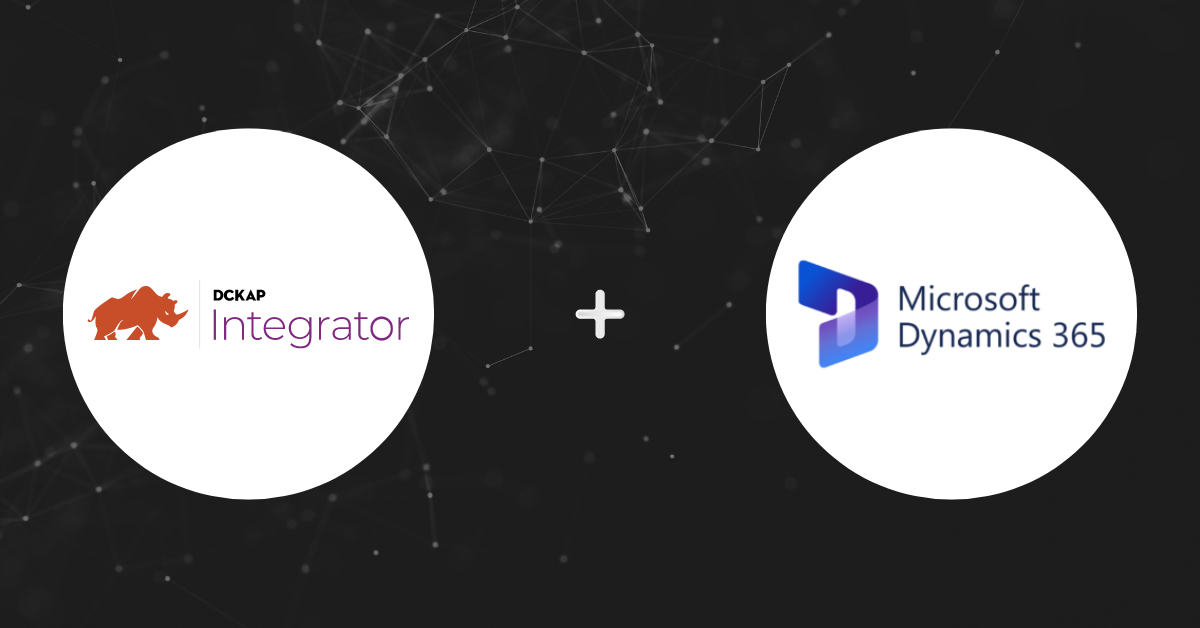Cloud integration is a strategic approach that enables businesses to combine different cloud-based and on-premises applications into a cohesive IT environment. This integration facilitates seamless communication across various software applications and platforms, enhancing data accessibility, operational efficiency, and strategic decision-making.
Whether you’re in the initial stages of adopting cloud technologies or looking to refine your existing cloud infrastructure, the insights shared here aim to better equip your business for successful integration.
Contents
Top Benefits of Cloud Integration
1. Accessibility: Breaking Down Data Silos
The increase of data accessibility is one of the top advantages of cloud integration. In the past, IT was a vertical department with data silos and information being trapped within specific departments or software applications, thus making the organization-wide access and analysis a difficulty. Through cloud integration platforms, the barriers between different departments are taken down and a comprehensive view of the company data is created.
89% of IT managers state that the existence of data silos is a hindrance to digital transformation, which is clear evidence of the key role of cloud integration in overcoming data barriers and improving collaboration. Such accessibility does not only mean that people make better-informed decisions but also accelerated innovation by combining different sources of data.
2. Flexibility: Tailored Data Management Solutions
Businesses are increasingly relying on cloud services to provide the flexibility required to adapt to diverse and evolving requirements. Cloud providers offer unmatched flexibility in managing and manipulating data.
Organizations can customize solutions based on specific business needs, whether it’s scaling data storage needs or integrating disparate systems. This flexibility supports dynamic market adaptation, allowing companies to swiftly respond to changes without the need for extensive overhauls in their IT infrastructure. This gives them a competitive edge in the market.
3. Scalability: Supporting Growth
Scalability is one of the most prominent advantages of cloud integrations in many aspects. As small businesses develop, the data and processing requirements also grow. Cloud platforms give companies a scaling option for resources or data storage that can be turned up or down as needed without a big initial investment in physical hardware or lengthy deployments.
The scalability of this system is such that they can continuously expand their operations in a shorter time-frame and continue to meet customers’ demands without data loss, performance degradation or interruptions.
4. Visibility: Enhanced Monitoring and Control
Real-time monitoring helps for proactive management and quick resolution of any arising problems before they affect business operations. Such improved visibility through cloud-based monitoring tools enables the reduction of downtime by a considerable margin, thus speeding up the process and thereby cutting the costs of interruptions and delays.
This data visibility is not only beneficial for immediate problem solving with instant data sharing but also helps in long-term planning and resource allocation, so that business leaders can optimize the processes and big data for best performance.
5. Cost Control: Optimizing Resources and Investments
Cloud integration services may bring about a considerable cost reduction with centralization of data management and cutting down of physical infrastructure and maintenance spending. Organizations can use the cloud services to flexibly provision their resources according to their needs, and avoid over-investing in under-utilized resources.
Through cloud integration, companies have the ability to plan and manage their budgets more effectively, reduce maintenance costs, allocate resources in a more efficient manner, and reinvest the saved money in core business activities that will promote further growth.
Also see: The Best Cloud Integration Tools in 2024
Challenges and Best Practices
Cloud application integration is becoming more important in modern business strategies, as it facilitates data sharing, flexibility, and operation streamlining. But the fact that these solutions can be implemented does not mean that it is without its challenges.
Network Latency: Maintaining Performance Standards
The severe slowdown in network latency can make cloud-based applications inefficient, and it can negatively affect the user experience and operational efficiency.
For the purpose of minimizing latency problems, companies should take advantage of network architecture optimization by choosing cloud service providers that have their data centers geographically close to the users’ location. On the other hand, the application of data compression techniques and adjusting data transmission protocols will also effectively decrease latency times.
Choosing the Right Architecture: Aligning with Business Needs
Choose the right cloud architecture (public, private, hybrid or multi-cloud) that is applicable and can differ based on business needs, use cases and compliance issues.
Firms will have to determine their business requirements, including data security, scale-up, and compliance issues, to pick the most appropriate cloud environment. Talking to IT experts and doing a detailed market analysis can help point out the platforms that are best to integrate with the cloud and support the organizational objectives.
Data Governance: Upholding Data Quality and Compliance
In distributed cloud architectures, the data quality management and regulatory compliance becomes more complex. The effective data governance framework is the key. This entails mapping out data ownership, providing data quality measures, and observing data protection regulations.
Automation tools are useful in implementing data governance by enforcing standard policies and reducing the risk of human error which increases with the volume of data processed across various platforms.
Cloud Integration Anti-Patterns: Avoiding Common Pitfalls
Mistakes like insufficient workload management and poor data handling practices, can ruin your cloud integration efforts.
Organizations should be aware of the integration anti-patterns like overloading a single integration point or neglecting the need for scalable design patterns. Periodic audits and updates of integration practices by experienced IT team members can detect and fix such glitches as well as improve the system reliability.
On-Premise Integrations: Bridging the Gap Between Different Environments
Interfacing cloud-based systems with the on-premises data and SaaS applications is usually a complex technical and operational task.
For smooth connectivity, it is essential that the cloud integration solutions be chosen to support hybrid environments. These solutions should enable secure data transmission and provide interoperable service features among cloud and on-premise systems.
Custom vs. Pre-Built Solutions: Choosing the Right Tools
Choose customized solutions that are designed to cater to particular business operations or the convenience of the prebuilt solutions that are quick in deployment is a crucial decision to make.
Businesses should assess their own needs taking into account the complexity of tasks, the presence of existing IT infrastructure and their budget restrictions.
While the custom made solutions can provide more control and customization, the pre-built solutions can help you in saving cost and faster implementation times. Generally, the use of a combination of the two solutions may be the most efficient way.
Recommended: Top 7 Data Integration Challenges and Solutions
How DCKAP Integrator Helps Distributors Integrate Seamlessly
Today, businesses are forced to integrate their data from multiple platforms in order to cut down on operational inefficiency and gain a competitive edge. DCKAP Integrator is a robust tool that tackles some of the most complex challenges that businesses face while integrating.
Seamless ERP Integration Across Varied Platforms
The DCKAP Integrator connects enterprise resource planning (ERP) systems with other important business applications such as eCommerce online store, Customer Relationship Management (CRM), inventory, accounting, logistics, IoT, supply chain and marketplaces.
Through the connectivity between cloud systems the data is flowing accurately and in real time between systems, which prevents data silos from occurring and therefore hindering business processes.
Customized Cloud Integration Solutions
No two businesses are the same. DCKAP Integrator is backed by a team of experts in distributor integration, who offer customized integration tailor-made to the specific needs of each client. This strategy is not only a way to meet individual requirements of different teams in an organization but also to ensure that cloud-based systems are efficient in both performance and security.
Real-Time Data Access and Integration
DCKAP Integrator helps ensure you have real-time access to accurate data. It’s dashboard allows easy insight into the movement of data between systems. In addition, the user group feature ensures greater data security within the team. By assigning different ‘roles’ to different team members, administrators can restrict access to view and edit data.
Features Built To Simplify, Not Complicate
With over a decade of experience working with distributors, the DCKAP Integrator is packed with features built to simplify integration for businesses. From easy mapping and modifier options to ensure that the data flows how they like, to auto-scheduling and even an updated workflow builder (pictured below), the tools ensures that integration is simplified and data management is made so much more efficient across teams.
Empowering Modern Distributors: Streamline Digital Transformation and Cloud Integration with DCKAP Integrator
DCKAP Integrator exemplifies as a mighty cloud integration tool that efficiently deals with critical issues such as data integration and security. Our solution is scalable and adaptable, being the perfect fit for the changing needs of today’s business.
Deciding on DCKAP is the best decision for business leaders as they can focus on their core tasks and delegate their data integration requirements to professionals who can make the process simpler and minimise the complexities of cloud-based data management. Integration of cloud data, which enables improved accessibility, flexibility and cost-efficiency, will help businesses to innovate and stay competitive and to achieve sustainable growth in the present digital age.




